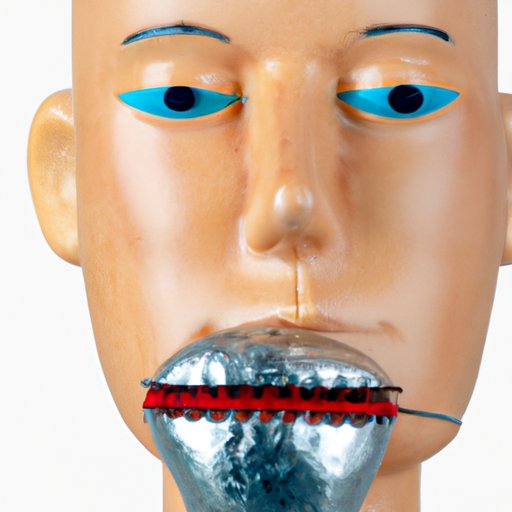
I. Introduction
Whistling is a beautiful art that is easy to learn and enjoyable to hear. Whether it’s a way to pass the time or to impress your friends, whistling is a skill worth mastering. In this article, we will cover everything you need to know to become a successful whistler. From the proper positioning of your lips and breath control to advanced techniques, we’ll go over it all. We will also take a look at the history and cultural significance of whistling, how it works, and its potential benefits. Finally, we will explore ways to teach children how to whistle and make the learning process fun.
II. Mastering the Art of Whistling: A Step-by-Step Guide for Beginners
Before we dive into the advanced techniques of whistling, you need to master the basics. First, ensure that your lips are in the proper position. The most common way is to pucker your lips as if you’re about to blow a kiss. With your lips in this position, your top lip should curl over your top teeth slightly.
Next, experiment with different mouth shapes. Move your jaw slightly forward or backward to find the best position for you. You can also adjust the space between your tongue and the roof of your mouth.
Your breath control is also critical. Take a deep breath and exhale slowly while making a low-pitched whistle. You can then increase the pitch of your whistle by exhaling faster and harder.
Another important factor when whistling is the positioning of your tongue. You want to keep your tongue behind your bottom front teeth slightly. Doing so will help you control the whistle’s pitch and volume.
Finally, practice different whistle tones by changing the shape of your mouth and the position of your tongue and lips. Try experimenting with lower or higher pitches and different volumes.
III. Whistling Techniques to Impress Your Friends
If you’ve mastered the basics, it’s time to move onto more advanced techniques. One impressive technique is vibrato, the rapid fluctuations in pitch that create a “warbling” effect. You can achieve vibrato by moving your jaw up and down slightly while whistling.
Another advanced technique is the trill, the rapid or fluttering kind of whistle. To trill, rapidly alternate between different notes with your tongue and breath. You can also increase your whistle’s loudness by exhaling harder and using more breath.
Whistling is also an excellent means of communication, especially in noisy surroundings or long distances. You can use it to get someone’s attention or convey a message without alerting people around you. Additionally, whistling has been used in music for centuries, from jazz and blues to classical performances such as Mozart’s “The Magic Flute.”
IV. The History and Cultural Significance of Whistling
Whistling has a rich history that dates back centuries and has been prevalent across different cultures. In ancient times, sailors used whistles-like devices to alert their comrades to land or potential dangers at sea.
In many cultures, whistling has been used as a means of communication in long-distance calling for generations. In Spain, a form of two-tone whistling was used for centuries to communicate over relatively long distances between mountainous areas. Similarly, in Turkey, shepherds use a form of whistling that can reach up to 4 kilometers. In North Africa, the indigenous Berber people use a phonetic whistled language that can convey an entire conversation.
In music, whistling has been used as a melodic instrument in several musical genres. Bluesman Little Walter was one of the first musicians to introduce the sound of the blues harp in the form of a harmonica that mimicked the sound of train whistles and, jazz musicians frequently use the sound of whistling in their improvisation.
V. How to Teach a Child to Whistle
Teaching children how to whistle can be a fun and exciting experience for both parties. The first thing to do is to teach them how to pucker their lips correctly. You can encourage them to “blow out the candles” and make a kiss-like shape with their lips.
Next, have them practice making different breathy sounds, like “hoo” or “hee,” or other similar sounds before moving onto actual whistling. You can also have them try to get creative by making different noises with their lips in different positions.
Finally, make the process enjoyable by adding games or challenges. For example, you could hold a contest to see who can whistle the loudest or create a melody with their whistles. Make sure to stay positive and encouraging throughout the process, even if the child isn’t succeeding immediately.
VI. The Science of Whistling: How It Works and Why It Matters
Whistling works by forcing air through a small gap created between your lips. As the air passes through this gap, it will cause the air surrounding it to vibrate, creating sound waves. The pitch of the whistle will depend on the length of the gap, the amount of air passing through it, and the shape and size of the resonating cavity formed by your mouth and throat.
Whistling has several potential benefits, including improving lung health by promoting slow and controlled exhalation. Regular whistling can also help reduce stress and lower blood pressure.
VII. Conclusion
Whether you’re looking to improve your skills or teach a child how to whistle, whistling is an enjoyable activity that has been around for centuries. With practice, anyone can master the art of whistling, and it can be a fun and exciting experience.




